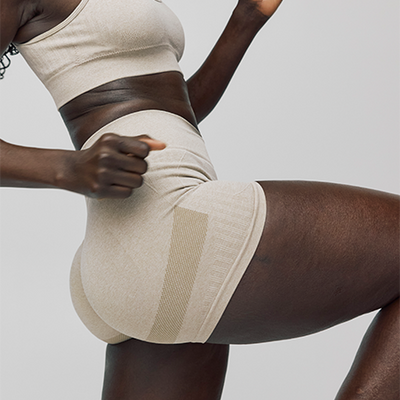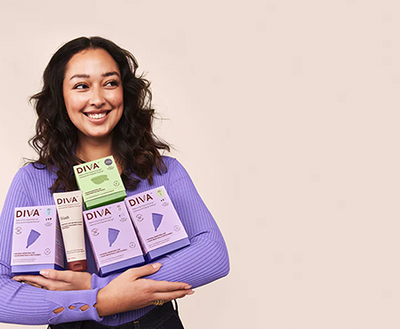
In this article /

This year, in celebration of Pride, Diva takes a look at how periods are experienced for people in the 2SLGBTQIA+ community. For many people, menstruation is just an ordinary monthly occurrence. For others, it can be a little more fraught. We believe that everyone should menstruate with dignity. Part of that is knowing how to manage a biological function that may bring up negative feelings. Here we look at some of the ways that periods can cause gender dysphoria, and offer ways to alleviate the feelings of uneasiness.
What is cisnormativity?
Cisnormativity is the assumption that everyone is cisgender.
Examples of cisnormative ideas around periods:
- only women menstruate
- periods signify womanhood
- menstruation is a “women’s issue”
Cisnormativity excludes the transgender and non-binary community—an entire group of people who menstruate.
Periods and cisnormativity
Since periods have a long history of being discussed in a cisnormative context, menstruation (and everything that comes with it) can cause a distressing experience for people who don’t identify with their assigned sex at birth.
In other words, if you get your period and you don’t identify as a woman, feelings of discomfort or anxiety might arise. This experience of uneasiness is also known as gender dysphoria.
Gender dysphoria and periods
Gender dysphoria is defined as the feeling of unease or discomfort that may arise when people whose gender identities are different from their assigned sex at birth.
Of course, not everyone who is trans or non-binary experiences gender dysphoria. However, to some, menstruation can heighten this feeling of dysphoria. The sight of menstrual blood or menstrual products may also be visually triggering because of their gendered associations.
How to alleviate gender dysphoria
If you or someone you know experiences gender dysphoria around menstruation, here are some tips for navigating the experience:
- Find period products that can comfortably support you, making your period as easy and pain-free as possible.
- Do things that affirm your identity on your cycle. Whether that means spending time with your friends or wearing your favourite feel-good outfits, seek out activities that make you feel confident in your identity.
- Reclaim your period as a non-gendered experience. You can start this by surrounding yourself with a period positive community that uses inclusive, non-gendered language.
- Reach out for support and express how you’re feeling to the people you’re most comfortable with.
Learn more about gender inclusive periods
Diva recently commissioned illustrator Clae Lu to share stories about their period as a trans non-binary person. From teaching us the basics about gender inclusive periods, to a more personal look at how Clae thinks of their own period, the “Menstruation Situation” series is a delightful and important reminder that all bodies do incredible things. Read the comic here.





















